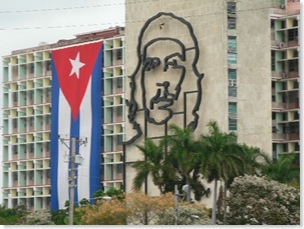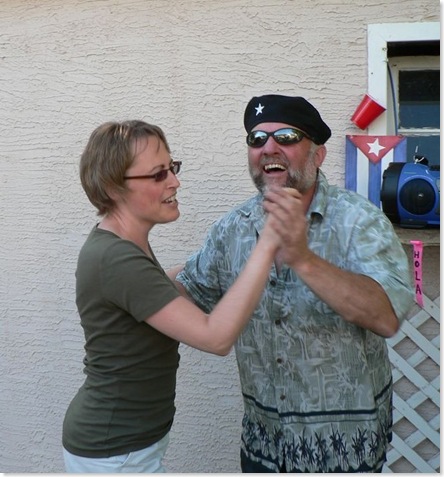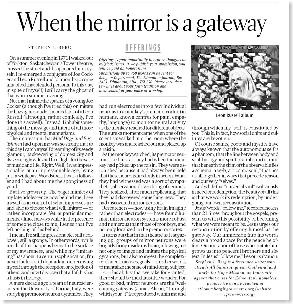 Cuba is built on the cigar. And not just any cigar–on the cigar of Che Guivera. The cigar of the revolution. The Montecristo. (Fidel always smoked Cohiba cigars, a cigar tailored, at first, just for him.)
Cuba is built on the cigar. And not just any cigar–on the cigar of Che Guivera. The cigar of the revolution. The Montecristo. (Fidel always smoked Cohiba cigars, a cigar tailored, at first, just for him.)
Their is an aura of divinity around Che and his perpetual cigar. And the pictures are everywhere. But the pictures have lost their intended inspiration, the aura has faded. Now Che lives on post-cards and tee-shirts.
Only in Revolution Square (where Castro, in 1961, proclaimed Cuba a socialist nation and abolished elections) does Che loom somewhat larger. His ironwork image is bolted to his building, where he was appointed Cuba’s Minister of Interior.
 But Plaza de la Revolucion is a bleak and ash-grey field of concrete some 15 acres square. You need to keep reminding yourself of the historical importance of the place in order to give it its due. Walking in the square I tried to imagine the annual celebrations, where Fidel, with commandante’ Guevara at his side, spoke for hours to throngs of (initially) exited Cubans. But there is a weight to the place, many weights, and you sense far too many disappointments, too much loss. As if the dreams of the revolution have gone up in cigar smoke.
But Plaza de la Revolucion is a bleak and ash-grey field of concrete some 15 acres square. You need to keep reminding yourself of the historical importance of the place in order to give it its due. Walking in the square I tried to imagine the annual celebrations, where Fidel, with commandante’ Guevara at his side, spoke for hours to throngs of (initially) exited Cubans. But there is a weight to the place, many weights, and you sense far too many disappointments, too much loss. As if the dreams of the revolution have gone up in cigar smoke.



